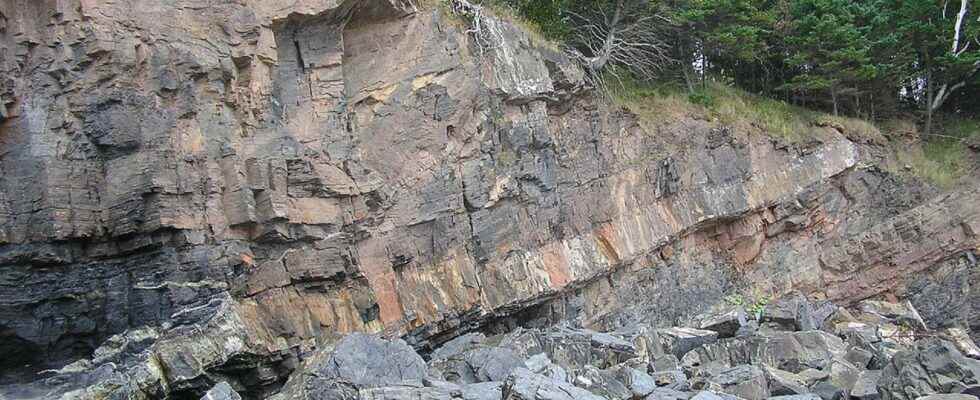Sills are intrusions of igneous rocks within the Earth’s crust. Of tabular geometry, they are in the form of let’s go horizontal, which insinuate themselves between older surrounding sedimentary layers. From this point of view, they differ from dykes, which themselves cut across the stratigraphy. We speak of conformable intrusions (for sills) in comparison with discordant intrusions (for dykes). The two types of intrusions can however be connected, in particular within a magmatic system under a volcanic edifice. Most of the time, the sills are fed with magma by dykes.
The sills can be organized in complexes, superimposing one above the other according to the stratigraphy of the surrounding rock. During sill formation, the magma is injected along fracture planes or weakness planes that preexist at the interface between the different strata. If the sills can extend over great distances in the horizontal plane, their thickness is rather reduced and of the order of a meter.
How to differentiate a sill from a lava flow?
Because of their concordance with the stratigraphy, the sills can be confused with lava flows. But several observations make it possible to differentiate the two types of setting up of the magma. The intrusion of magma within the crust will indeed induce a contact metamorphism in the surrounding rocks. These mineralogical modifications induced by the heating of the rock in contact with the magma will therefore be visible both at the base and at the roof of the sill. In the case of a lava flow, which occurs on the surface, this type of recrystallization will only be visible for rocks at the base of the flow. The upper part of the casting will be marked by signs of chemical alteration due to contact withair and bad weather, whereas this will not be visible in the case of a sill, which crystallizes in depth. Finally, while the lava flows are rich in bubbles, due to the degassing of the lava on the surface, the magmatic rocks composing the sills do not show any vesicle, due to the strong pressure lithostatic applied by the surrounding rock during the magma crystallization.
Some sill complexes may have large amounts of mineralsas goldof platinumchrome or other elements.
You will also be interested
Interested in what you just read?
